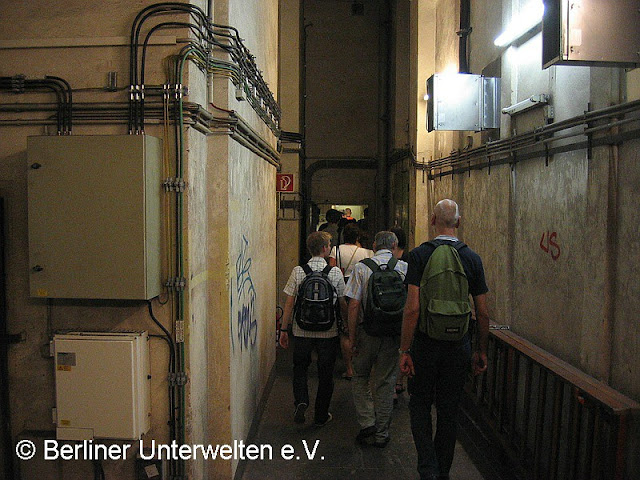Disclaimer: Sensitive readers may find this post to be graphic, but I think it’s a part of history rarely mentioned. Read at your own risk.
He who builds bunkers is the first to drop bombs.
It could happen any day now. The end of the world. World War 3. Doomsday. Not as the Mayans predicted it, but the end all the same.
This is how Berliners spent the Cold War. On any given day, a bomb could be dropped, killing every citizen, leaving the city in ruins. They kept graphic memories of the last time they were forced into bunkers, as they prepared for the Russian “liberation,” where women were assaulted and many hung themselves in the showers.
They ate the same thing for days on end, green pea soup and 2.5 liters of water. Clanking of metal bunks, moans of people who lost family and the crashes of life above ground were maddening.
When Hitler sensed his time was almost up, he started to build these bunkers all over Berlin, one of which is where he met his end. This includes many bunkers in modern U-Bahn stations, including Alexanderplatz and Potsdamer Platz. They were at the ready during the Cold War, fully stocked, but were soon forgotten over the years.
That is, until 1997 when Berliner Unterwelten, a non-profit organization, uncovered the bunker at the Gesundbrunnen station in northern Berlin. While most bunkers were destroyed in 1947, this one survived, as it lies on top of the train line.
Admittance was on a first-come first-serve basis, so families were often separated and violence broke out between those trying to get in. The people would survive there for 48 hours with water, but no food.
The nearby Pankstrasse station was built as one of many “multi-purpose structures” throughout the city. The bunker corridor leads directly to the U-Bahn station platform. In the event of an emergency, two trains would stop to hold more people.
The door inside of the bunker is designed to let only one person in at a time and from there they must go through the decontamination corridor. Twenty people were charged with leading 3,346 Berliners for 14 days until it was safe to go outside again. The bunkers of Berlin would only hold 0.8% of the city’s population.
My experience with Berlin’s Cold War bunkers made me wonder: if it comes down to the end of the world, would I escape to a bunker to live a life of potential agony or accept my fate? I thought of the Superdome after Hurricane Katrina and other horrific post-disaster situations and decided right then and there that I would celebrate my life’s experiences, pour myself a glass of wine and accept what’s coming. What would you do?
These tours are the best way to understand what it was like in wartime Berlin. Avoid the touristy Checkpoint Charlie, pieces of the Berlin Wall and the Brandenburg Gate in favor of going underground. The bunkers became a historical landmark in 2011 and 90% of ticket sales go to further research, so this is a great organization to support.
You can reach the Berliner Unterwelten office by S-Bahn via the 1, 2, 25, 41 and 42 lines. Tours are available in multiple languages and tickets cost €10. Please note that no photos or video are allowed inside of the bunkers. Visitors sensitive to darkness and tight spaces may want to skip this tour.
Photos, unless otherwise noted are used with permission by Berlin Underground (© Berliner Unterwelten e.V.) and are not to be reproduced.
I received a complimentary “Cold War Bunkers” tour through a partnership with Viator, but all opinions are my own.



Answering to your question “What would you do?”- I would stay till my loved ones need my protection and help.
Sounds like a fascinating tour. I used to live on a street here in Berlin famous for all the underground bunkers. There were always tour groups walking by to take photos — certainly an interesting topic.
Great post Caroline. I’ve been meaning to take a Berliner Unterwelten tour since I got to Berlin 15 months ago. I must get it organised. (A minor correction, I think it should be Gesundbrunnen station).
Thanks for catching my error, David!